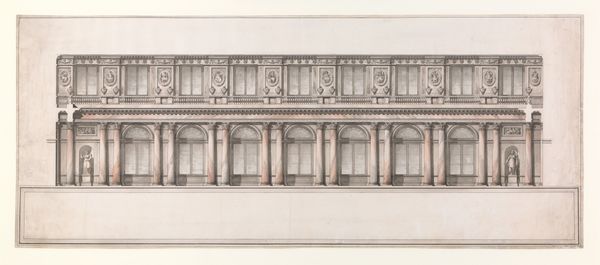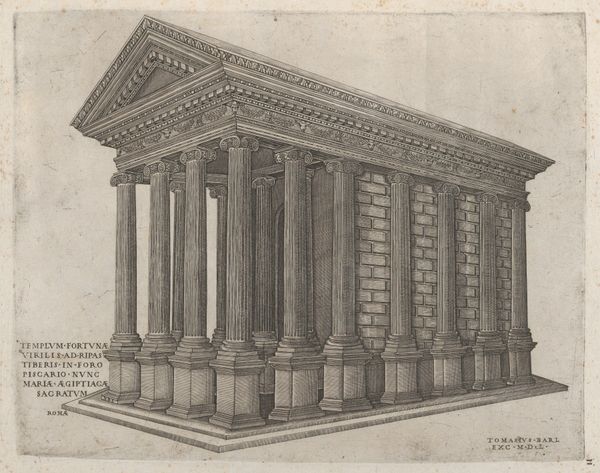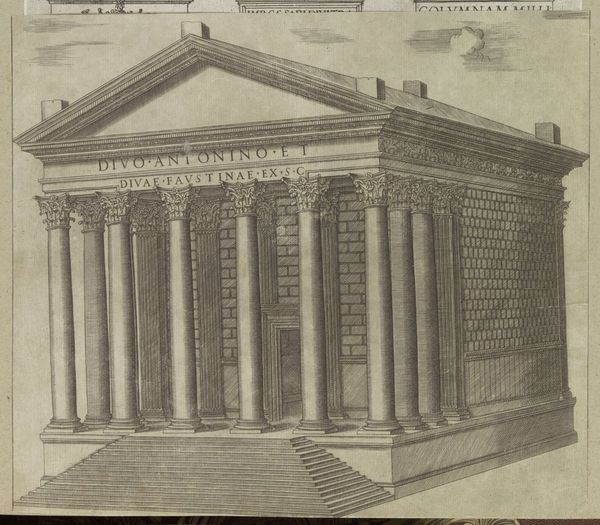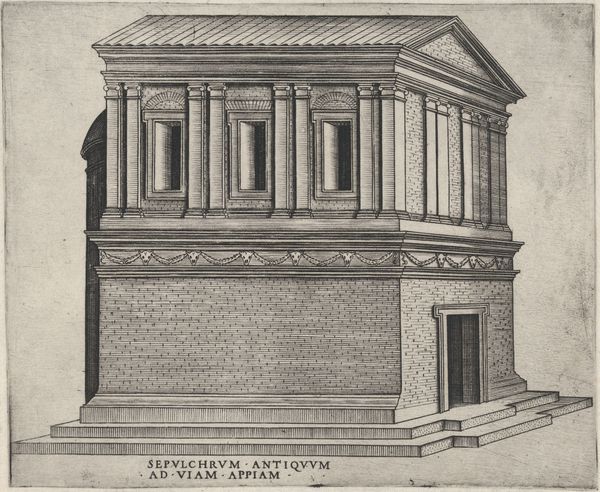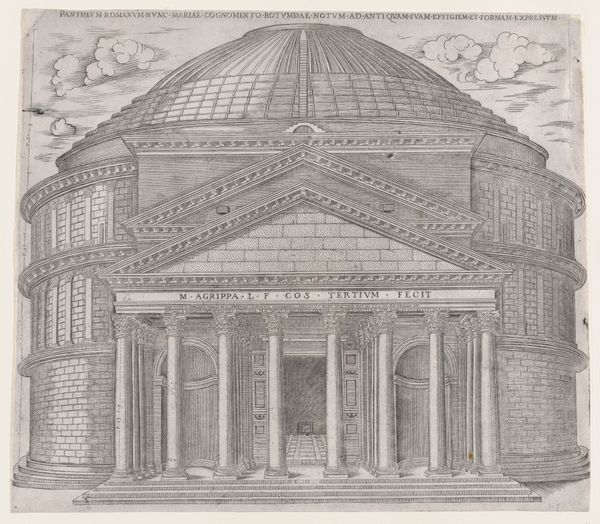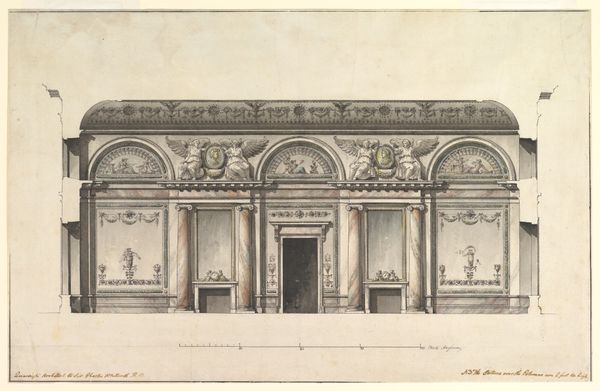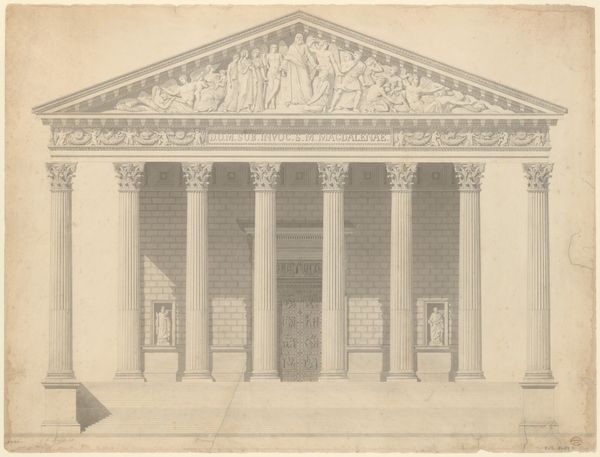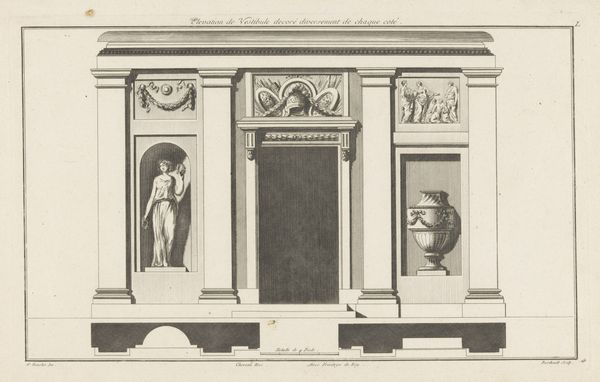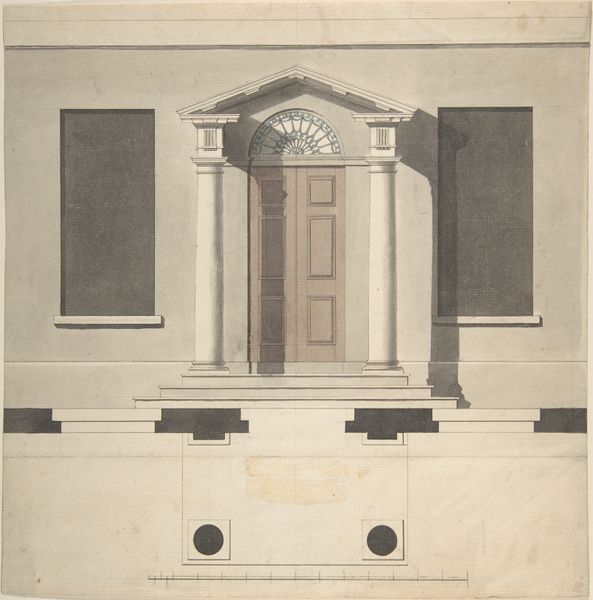
Speculum Romanae Magnificentiae: Maison antique a Nymmes 1530 - 1580
0:00
0:00
drawing, print, architecture
#
drawing
# print
#
form
#
11_renaissance
#
line
#
cityscape
#
italian-renaissance
#
architecture
Dimensions: mount: 10 9/16 x 16 3/4 in. (26.8 x 42.5 cm) sheet: 7 7/8 x 11 1/8 in. (20 x 28.2 cm)
Copyright: Public Domain
Curator: Here we have "Speculum Romanae Magnificentiae: Maison antique a Nymmes," dating from sometime between 1530 and 1580. It's attributed to an anonymous artist, executed in a drawing and print medium. The scene features a formal view of an ancient building facade, perhaps offering us a look into Renaissance understandings of the classical world. What do you think of it? Editor: Initially, it feels austere. The crisp lines and lack of ornamentation give it a severe elegance, a real monumentality but also a curious sense of flatness. The repetition of those columns is strangely hypnotic, creating this somewhat lifeless rhythm across the surface. Curator: That's a sharp observation. The image does reflect a desire to accurately document Roman antiquity during a period of intense architectural revival. These “speculum” prints were a means of virtually experiencing and disseminating the grandeur of Roman ruins when travel wasn't accessible. It spoke volumes about power. Editor: Indeed. And the absence of figures, or any visible social activity, adds to the solemn tone. It seems to speak to an interest in the architecture for architecture's sake; there's something quite masculine, quite colonial about that kind of decontextualized appreciation. As if the stones were being admired in the abstract, scrubbed clean of the lives that once animated them. Curator: I hadn't thought about that reading in the colonial lens, but it aligns with contemporary conversations around whose stories are valued and made visible. This print then can be examined as an exercise in idealizing, and perhaps sanitizing, a particular historical narrative and reinforcing it through imagery accessible across a range of audiences. The focus is resolutely on form. Editor: Yes, even that stark use of line work feels imbued with power. By stripping away anything that could suggest a more embodied experience of the structure – the smells, sounds, or lived realities – you're left with something closer to an abstract idea of ‘Rome’ which has real bearing on how it was conceived. Curator: Precisely. Seeing this drawing now forces us to think critically about who crafted it, who consumed it, and the values it projected during its time and continues to uphold centuries later. Editor: Absolutely. What initially seemed like a simple architectural study reveals layers of cultural and political complexity, encouraging us to interrogate the visual languages of power embedded within art history.
Comments
No comments
Be the first to comment and join the conversation on the ultimate creative platform.
